Effective partnerships
By Mary Bigelow
Posted on 2015-02-12
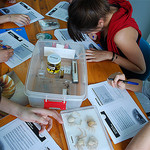 My school has been approached by a university to form a partnership to apply for grants for elementary science and math. What factors should we consider regarding this offer? —L., California
My school has been approached by a university to form a partnership to apply for grants for elementary science and math. What factors should we consider regarding this offer? —L., California
This could be a great opportunity to supplement or enhance the professional development, materials, programs, or technology in your school, especially if you have a tight budget. Before you agree, representatives from your school (including teachers and administrators) should meet with the university staff to ask questions, share ideas, and develop a project that will benefit all of the stakeholders (especially the students). I’ve been involved with several K-16 projects that had various interpretations of the word “partnership,” so from the beginning it’s essential to collaborate on a shared definition of terms and agreed-upon expectations for responsibilities and outcomes.
For example, in one very traditional project, the teachers attended workshops or courses conducted by the university during the school year. Teachers updated their content knowledge and became more familiar with technology and lab equipment. If you participate in this type of partnership, it is important to describe and assess not only what the teachers will learn, but also how this new knowledge will influence their classroom instruction.
In another project, university professors worked with teachers in hands-on activities over the summer on special topics aligned with the state science standards. During the school year, the professors visited the schools to interact with the K-6 students. Spending time in an elementary school was a new experience for them. They learned what challenges the teachers faced, including the variety of students (and size of the classes), the obligation to address state science standards, the type of equipment available in the schools, and the emphasis on testing in reading and mathematics. But they enjoyed the energy and enthusiasm of the students and were impressed by their questions and interest. The students had the opportunity to meet and work with real scientists. The disadvantage of this type of project is a “special event” atmosphere can occur. For any lasting impact, this should be an ongoing collaboration between the teacher and the professor, not just a few gee-whiz demonstrations by the professor while the teacher watches from the sidelines.
I’ve heard about mentoring projects during which teachers spent a summer working as research assistants at a university or science organization. They learned the content, lab procedures, and research models in use. They assisted with collecting and analyzing data. The teachers returned to their classrooms in the fall with new content knowledge, a sense of accomplishment, and insights into what is involved in scientific research. This type of mentoring required a commitment from both the teachers and the lead researchers. in addition, the teacher-researchers required training and background education on the research subject.
Then there are partnerships that give teachers access to the facilities of higher education: nature centers, museums, specialized equipment and expertise, tours of laboratories, access to library resources, invitations to special lectures or presentations, and field trip opportunities for students. Some higher education institutions have traveling science specialists that visit schools for demonstrations or assemblies.
Ask about the responsibilities the school will have in terms of recruiting teachers to participate, scheduling time, and providing support or materials. If the university staff will work directly with students, they may need clearances in compliance with state or local laws.
If the partnership is part of a university research project, teachers and students’ parents may be asked to sign consent or release forms, according to university policy. It should be clear what type of data the university will need to access or collect, for example student standardized test scores, observations, student pre-and posttests, teacher feedback, surveys, photographs/videos, or interviews. The ownership of any equipment should be established ahead of time, as well as who will be listed on any publications or press releases about the project.
In most partnerships, the K-12 teachers and the university faculty were compensated for the time they spend beyond their normal teaching duties.
Regardless of what your partnership project looks like, it will be important to ask: What happens at the end of the project? What knowledge, skills, materials, and self-confidence will the teachers have gained that will continue to improve student learning?
Photo: https://www.flickr.com/photos/xevivarela/4610711363/sizes/o/in/photostream/
Learn About Argumentation With NSTA Press Author Victor Sampson
By Wendy Rubin, Managing Editor, NSTA Press
Posted on 2015-02-10
Join NSTA Press author Victor Sampson in Orlando for workshops about scientific argumentation.
Scientific Argumentation in Biology
Attendees will receive a copy of the book Scientific Argumentation in Biology.
Date: Feb. 25, 2015
Place: Marriott Residence Inn Orlando at SeaWorld
Registration: 1 Day: $195/per person
Visit www.scientificargumentation.com/upcoming-workshops.html to register and learn more about the Scientific Argumentation Workshop.
Argument-Driven Inquiry in Biology
Attendees will receive a copy of the book Argument-Driven Inquiry in Biology.
Date: Feb. 26, 2015
Place: Marriott Residence Inn Orlando at SeaWorld
Registration: 1 Day: $195/per person
Argument-Driven Inquiry in Chemistry
Attendees will receive a copy of the book Argument-Driven Inquiry in Chemistry.
Date: Feb. 27, 2015
Place: Marriott Residence Inn Orlando at SeaWorld
Registration: 1 Day: $195/per person
Visit www.argumentdriveninquiry.com/orlando-feb-26–27-2015.html to register and learn more about the Argument-Driven Inquiry Workshops.
Questions? E-mail kristaclark.adi@gmail.com.
Join NSTA Press author Victor Sampson in Orlando for workshops about scientific argumentation.
Celebrate International Book Giving Day with NSTA, the Home of Science Literacy
By Lauren Jonas, NSTA Assistant Executive Director
Posted on 2015-02-09
 February 14 is not only Valentine’s Day but also International Book Giving Day. Literacy is an important focus for NSTA, and a subject that is personally important to our staff and membership, so we’re celebrating! What’s the day about? Giving books to children and promoting enthusiasm and excitement about books–and as you teach kids to cherish books, it’s important to teach them to care for them properly, so we’re loving the bookmark freebie available for download from the book giving day site!
February 14 is not only Valentine’s Day but also International Book Giving Day. Literacy is an important focus for NSTA, and a subject that is personally important to our staff and membership, so we’re celebrating! What’s the day about? Giving books to children and promoting enthusiasm and excitement about books–and as you teach kids to cherish books, it’s important to teach them to care for them properly, so we’re loving the bookmark freebie available for download from the book giving day site!
As an organization devoted to science teachers, we know that science and reading is a winning combination. For more than 40 years we’ve partnered with the Children’s Book Council to produce an annual list of Outstanding Science Trade Books for Students K-12. This year’s list has everything from Batman Science to Beetle Busters to Sally Ride. There’s something for students at every grade and interest level. If you’re looking for a great book to give or check out from the library, look no further.
If you’re a science teacher and want to incorporate science content into your reading program, we have some great resources that will save you time in the classroom and help you reach students in innovative ways (free registration in the NSTA Learning Center required).
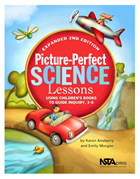 Why Read Picture Books in Science Class? This free e-book provides information on how to implement Picture-Perfect Science in your classroom—including key reading strategies and the first five chapters of the book Picture-Perfect Science Lessons, Expanded 2nd Edition: Using Children’s Books to Guide Inquiry, 3–6.
Why Read Picture Books in Science Class? This free e-book provides information on how to implement Picture-Perfect Science in your classroom—including key reading strategies and the first five chapters of the book Picture-Perfect Science Lessons, Expanded 2nd Edition: Using Children’s Books to Guide Inquiry, 3–6.- Teaching Science Through Trade Books This archived web seminar features Christine Royce, NSTA Member and Press author of Teaching Science Through Trade Books. In this free program, Dr. Royce shared strategies for using fiction and nonfiction children’s books to teach fundamental science concepts.
 Water Wherever Not sure how to incorporate books into science teaching? Find inspiration in this trade book–focused article from the NSTA journal Science and Children. Whether rain, sleet, or snow, February weather across the country provides students with opportunities to observe the many different ways the water cycle affects our daily lives. This article looks at the water cycle and looks at two trade books: The Snowy Day and The Drop in My Drink. Activities are provided for students in grades K–3 and 4–6.
Water Wherever Not sure how to incorporate books into science teaching? Find inspiration in this trade book–focused article from the NSTA journal Science and Children. Whether rain, sleet, or snow, February weather across the country provides students with opportunities to observe the many different ways the water cycle affects our daily lives. This article looks at the water cycle and looks at two trade books: The Snowy Day and The Drop in My Drink. Activities are provided for students in grades K–3 and 4–6.
Looking for more teaching resources that pair reading and science? Join a vibrant community of fellow learners who depend on the NSTA Learning Center. There, you can create your personalized learning journey based on your own unique learning needs and preferences. You can plan, track, and assess your progress over time. It’s free to register and connects you with a vast array of opportunities.
 Looking for new books to add to your library? Now through Monday, February 23, 2015, we’re offering 10% off all our NSTA Kids books (includes all NSTA Kids e-books, mixed-media sets, and sets). Use promo code GIVEBK at check out when you purchase these kid magnets in the NSTA Science Store.
Looking for new books to add to your library? Now through Monday, February 23, 2015, we’re offering 10% off all our NSTA Kids books (includes all NSTA Kids e-books, mixed-media sets, and sets). Use promo code GIVEBK at check out when you purchase these kid magnets in the NSTA Science Store.
So put February 14 on your calendar and join us as we celebrate International Book Giving Day. Here at NSTA we’ll be donating books to local schools via a staff book giveaway. Follow us on Twitter @NSTA to see pictures, and we hope you’ll share with us the creative ways you find to nurture the love of reading in your budding scientists! And don’t forget to teach them to respect books–if you’re looking for a lovely way to encourage your students to spread their literary wings, we offer this downloadable NSTA book mark to help them mark their progress. If you have a two-sided printer, you won’t want to miss the gorgeous art on the back.
Follow NSTA
 February 14 is not only Valentine’s Day but also International Book Giving Day. Literacy is an important focus for NSTA, and a subject that is personally important to our staff and membership, so we’re celebrating! What’s the day about?
February 14 is not only Valentine’s Day but also International Book Giving Day. Literacy is an important focus for NSTA, and a subject that is personally important to our staff and membership, so we’re celebrating! What’s the day about?
Heat and energy: what can young children understand?
By Peggy Ashbrook
Posted on 2015-02-09
 My cat has moved to the top of the radiator for the winter, at least when the boiler is on and warm air is moving up through convection from below. With a house temperature of 66*-68*F, I would also like to lie on it, hopefully with some sunshine radiating light and warmth through the window. “Radiating,” is that a word that children can understand? What vocabulary should we use to talk about the movement of “warmth” from one place to another? For preschool children we can begin with “”heat,” “hot,” “cold,” “warm,” “cool,” and “moving,” adding “transfer” as we have occasion to use it while talking with children about their experiences. For teacher background information about heat, read “Cool Facts About Heat” by Stephanie Chasteen on the Ohio State University online magazine for elementary teachers, Beyond Penguins and Polar Bears.
My cat has moved to the top of the radiator for the winter, at least when the boiler is on and warm air is moving up through convection from below. With a house temperature of 66*-68*F, I would also like to lie on it, hopefully with some sunshine radiating light and warmth through the window. “Radiating,” is that a word that children can understand? What vocabulary should we use to talk about the movement of “warmth” from one place to another? For preschool children we can begin with “”heat,” “hot,” “cold,” “warm,” “cool,” and “moving,” adding “transfer” as we have occasion to use it while talking with children about their experiences. For teacher background information about heat, read “Cool Facts About Heat” by Stephanie Chasteen on the Ohio State University online magazine for elementary teachers, Beyond Penguins and Polar Bears.
As a preschool teacher I am not confined to teaching concepts and vocabulary during a “unit” but can engage children in discussions and re-visit activities throughout the year. In summer, we might feel heat radiating from a metal sliding board or the blacktop. The metal and blacktop were warmed as they absorbed the radiation from the sun. Year round, we can experience the changing temperature of a cup of hot (warm) chocolate, a baked potato or a hard-boiled egg cooling down in our hands as the heat transfers to our hands and the surrounding air.
Another way of exploring the transfer of heat is to melt an ice cube in our hands. In the January 2006 Science and Children’s Early Years column I wrote, that “…keeping a child’s attention while a solid melts completely can be a challenge. That is why when exploring melting, it’s worth it to repeat the experience a few times with various substances, including chocolate and wax.” If melting ice doesn’t arouse a child’s curiosity, maybe melting chocolate will! Early childhood teacher and author Marie Faust Evitt engages her students in an activity involving heat transfer called “What is Your Cold Count?” where children make predictions. See photos on the Facebook page for her book, Thinking BIG Learning BIG.
In addition to providing experiences where children can observe the transfer of heat from one material to another, engage them in conversations and discussion about what they noticed and what they think about it. Heat is energy that is moving, going from one place to another. There is no rush for children to understand the concept of energy–it is enough to talk about the movement of heat. The Next Generation Science Standards Kindergarten performance expectation about energy, K-PS3-1, is, “Make observations to determine the effect of sunlight on Earth’s surface,” something children can do as they feel rocks or sand in sunlight and in shade.
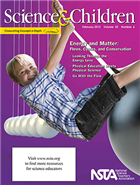 The February 2015 issue of Science and Children focuses on the Crosscutting Concept, Heat and Energy. The Teaching Through Trade Books column, “Understanding Matter and Energy” by Christine Anne Royce, and the Science 101 column, “How Should We Label Different Kinds of Energy?” by Bill Robertson are two resources that can help us understand the concept of energy, a fourth grade performance expectation in the Next Generation Science Standards. Read the Disciplinary Core Ideas in the box below the performance expectations to learn more about energy. Appendix E of the NGSS, “Progressions Within the Next Generation Science Standards” has progressions in student thinking about energy. A Framework for K-12 Science Education, a free download, the foundation for the NGSS, has an extensive section on energy, pages 120-130.
The February 2015 issue of Science and Children focuses on the Crosscutting Concept, Heat and Energy. The Teaching Through Trade Books column, “Understanding Matter and Energy” by Christine Anne Royce, and the Science 101 column, “How Should We Label Different Kinds of Energy?” by Bill Robertson are two resources that can help us understand the concept of energy, a fourth grade performance expectation in the Next Generation Science Standards. Read the Disciplinary Core Ideas in the box below the performance expectations to learn more about energy. Appendix E of the NGSS, “Progressions Within the Next Generation Science Standards” has progressions in student thinking about energy. A Framework for K-12 Science Education, a free download, the foundation for the NGSS, has an extensive section on energy, pages 120-130.
 Misconceptions may be held by children, and they may also be confused by words have different meanings or usages in every day and in scientific contexts. Jessica Fries-Gaither wrote about “Common Misconceptions about Heat and Insulation” on Beyond Penguins and Polar Bears. Fries-Gaither notes that, “many of these misconceptions are persistent and even developmentally appropriate. With the proper experiences and informal exploration in elementary school, students will be prepared to tackle these misconceptions in later years.”
Misconceptions may be held by children, and they may also be confused by words have different meanings or usages in every day and in scientific contexts. Jessica Fries-Gaither wrote about “Common Misconceptions about Heat and Insulation” on Beyond Penguins and Polar Bears. Fries-Gaither notes that, “many of these misconceptions are persistent and even developmentally appropriate. With the proper experiences and informal exploration in elementary school, students will be prepared to tackle these misconceptions in later years.”
In writing about this topic I turned to the NSTA online community for guidance. I wanted to check my understanding and find out what others thought young children can understand. Both the email listserv for NSTA members and the open-to-all forums in the NSTA Learning Center are terrific tools for connecting and learning from colleagues. Thank you all!
Legislative Update
Senate Leaders to Start Over on No Child Left Behind
By Jodi Peterson
Posted on 2015-02-08
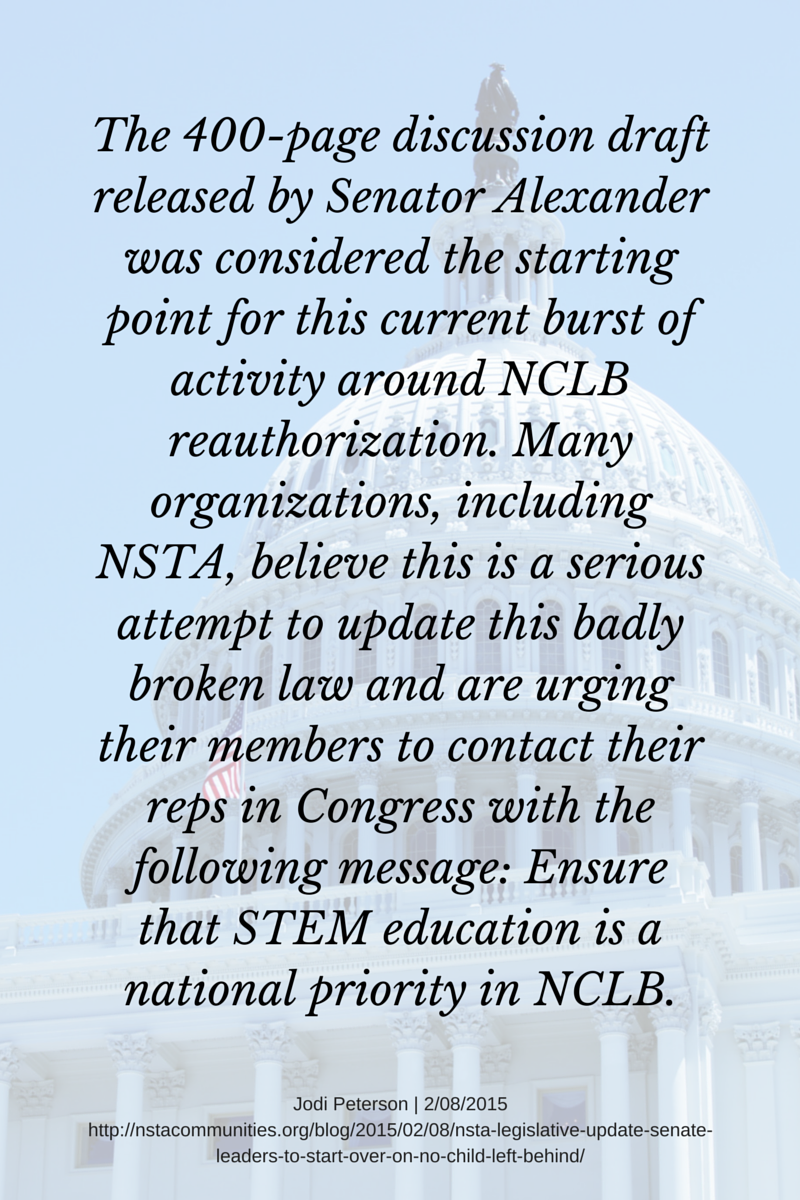 Last week the Washington Post reported that Senator Lamar Alexander (R-TN) and Senator Patty Murray (D-WA), chair and ranking member of the Senate Health, Education, Labor & Pensions (HELP) Committee respectively, will work together to draft a bipartisan bill to reauthorize No Child Left Behind (NCLB), instead of working from a discussion draft bill introduced by Committee Chairman Lamar Alexander a few weeks ago and “they are determined to find common ground and draft a new law that will get bipartisan support.”
Last week the Washington Post reported that Senator Lamar Alexander (R-TN) and Senator Patty Murray (D-WA), chair and ranking member of the Senate Health, Education, Labor & Pensions (HELP) Committee respectively, will work together to draft a bipartisan bill to reauthorize No Child Left Behind (NCLB), instead of working from a discussion draft bill introduced by Committee Chairman Lamar Alexander a few weeks ago and “they are determined to find common ground and draft a new law that will get bipartisan support.”
As noted in a Jan. 19 blog post, the 400-page discussion draft released by Senator Alexander was considered the starting point for this current burst of activity around NCLB reauthorization. Many organizations, including NSTA, believe this is a serious attempt to update this badly broken law and are urging their members to contact their reps in Congress with the following message: Ensure that STEM education is a national priority in NCLB. Please use the STEM Education Coalition website and contact your members of Congress with this message.
With these new developments, it is highly unlikely that the Senate HELP committee will push out any NCLB legislation by the end of February.
Also last week, Republican education leaders in the House introduced their bill to replace No Child Left Behind. The Student Success Act (H.R. 5) will reduce the federal footprint and restore local control, while empowering parents and education leaders to hold schools accountable for effectively teaching students.
In other legislative news, the President’s budget released last week had some good news for science and STEM education:
- $3 billion for STEM education programs in total across 13 federal agencies, an increase of 3.6 percent over the 2015 enacted level
- $202.7 million for the existing Math and Science Partnership program, a $50 million increase over FY15. The budget also proposes reserving $25 million of this funding for competitive grants to support state and regional STEM networks and a reservation of 5% for “national” activities
- $125 million for a new program called Next Generation High Schools, which would promote the whole school transformation of high school education. The Department would place a strong focus on projects designed to improve readiness for college and careers in STEM fields, particularly for student groups historically underrepresented in those fields.
At the National Science Foundation,funding for the NSF’s Education and Human Resources Directorate is proposed at $962.57 million, an increase of $96 million of 11.2% over FY 2015. Funding for the STEM+Computer Science Partnerships Program is proposed for $64 million, an increase of $7 million. [This includes $52 million from EHR and $12.5 million from the Computing Research Directorate (CISE).]
Stay tuned and look for upcoming issues of NSTA Express for the latest information on developments in Washington, DC.
Jodi Peterson is Assistant Executive Director of Legislative Affairs for the National Science Teachers Association (NSTA) and Chair of the STEM Education Coalition. e-mail Jodi at jpeterson@nsta.org; follower her on Twitter at @stemedadvocate.
The mission of NSTA is to promote excellence and innovation in science teaching and learning for all.
Follow NSTA
 Last week the Washington Pos
Last week the Washington Pos
Using Physical Science Gadgets and Gizmos in Elementary Grades
By Carole Hayward
Posted on 2015-02-08
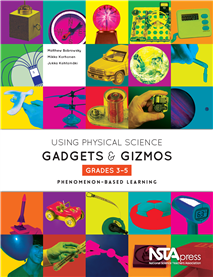 The authors of the popular Phenomenon-Based Learning series have released a new book geared toward elementary-age students. Using Physical Science Gadgets & Gizmos, Grades 3-5: Phenomenon-Based Learning is the latest book by Matthew Bobrowsky, Mikko Korhonen, and Jukka Kohtamäki. The activities they include are designed to building learning on observations of real-world phenomena—in this case of some fun toys or gadgets.
The authors of the popular Phenomenon-Based Learning series have released a new book geared toward elementary-age students. Using Physical Science Gadgets & Gizmos, Grades 3-5: Phenomenon-Based Learning is the latest book by Matthew Bobrowsky, Mikko Korhonen, and Jukka Kohtamäki. The activities they include are designed to building learning on observations of real-world phenomena—in this case of some fun toys or gadgets.
In the phenomenon-based learning (PBL) approach, students work and explore collaboratively: Exercises are done in groups, and students’ conclusions are also drawn in groups. “With the PBL strategy, the concepts and the phenomena are approached from different angles, each adding a piece to the puzzle with the goal of developing a picture correctly portraying the real situation.” In other words, it’s not so much a teaching method as it is a route to grasping the big picture.
The 30 PBL activities included in the book are divided into 8 main categories. Here are some examples of the fun you and your students can have while teaching and learning important science concepts:
- Speed: Using a Constant-Velocity Car, learn about constant speed, and measure some speeds with simple tools.
- Friction and Air Resistance: With an Air Puck, study how objects act if there is very little friction.
- Gravity: Using an IR-Controlled UFO Flyer, explore how gravitation tries to pull things toward the ground.
- Air Pressure: Using an Air-Powered Projectile, see the effect of gravitation and excess pressure.
- Electricity: With a Plasma Globe, explore electric charges and the phenomenon they cause called static electricity.
- Electric Circuits: Using a Hand Crank from a Snaptricity (a box of electric components that snap together for easy use), create a voltage just like a battery and light up a lamp.
- Magnetism: From the same Snaptricity box, take the compass and find out what it does when a bar magnet is brought close to it.
- Energy: Using a music box, explore moving energy with sound to learn what makes hearing possible.
The authors emphasize three reasons to buy this book:
- To improve your students’ thinking skills and problem-solving abilities.
- To get easy-to-perform experiments that engage students in the topic.
- To make your physics lessons waaaaay more cool.
Ordering information for all of the gadgets and gizmos used in the book is included. This book is also available as an e-book. Learn more about the other books in this series.
Changing careers
By Mary Bigelow
Posted on 2015-02-06
 I am thinking of switching careers to become a secondary science teacher (I currently work for an environmental agency). Before I decide, what should I consider? —S., Connecticut
I am thinking of switching careers to become a secondary science teacher (I currently work for an environmental agency). Before I decide, what should I consider? —S., Connecticut
Being a science teacher is a rewarding and challenging experience, helping students develop and pursue their own interests in a subject you are passionate about. Many of our students have never met a scientist in person, and with your background, you can show students how science connects with the “real” world. You can also share the variety of work that scientists do beyond the lab—reports, letters, presentations, and other communications. Some schools may prefer “nontraditional” beginning teachers such as you, who bring life experiences and in-depth content background to the classroom.
You may want to see if a nearby middle or high school will let you “shadow” a science teacher for a day to see for yourself the challenges of working with 25 teenagers in a classroom. Secondary teachers usually have 4-6 sections, interacting with 100-150 students each day, including students with special needs or students learning the English language. Teachers may be assigned to teach more than one subject, depending on their certification. Note the types of technology that teachers use and how they manage their labs (most often without an assistant). You’ll also see other parts of a teacher’s day, including supervision duties in the halls and lunchroom, extracurricular activities, and tutoring.
But a teacher’s day does not end at 3:00, as I assume you realize. Staff meetings, professional development sessions, and managing a laboratory all require time beyond the school day. And teachers have their own “homework”—grading lab reports and tests, planning and revising lessons, preparing and organizing other learning materials, and keeping current on content and pedagogy through courses, workshop, and on-line studies. Much of this homework continues over holiday and summer breaks.
The state’s education department website should have a section on the science standards by grade level or subject and information on any standardized assessments that are administered at the secondary level, including end-of-course exams, for which you would be responsible. (If your state has adopted the Next Generation Science Standards, NSTA has a wealth of resources to help you become familiar with them. See NGSS@NSTA)
Check out the job situation at the schools in the area(s) in which you would like to work. Are they hiring new teachers? Are the schools downsizing or eliminating positions? Keep in mind you’ll probably start at a low level of the pay scale.
In places where there is a surplus of teachers, many start out doing substitute work (per diem pay and no benefits), which is a good way to share your availability and showcase your talents. In addition to schools, other types of institutions often hire informal educators, curators, or naturalists: museums, nature centers, zoos, and state or national parks. These positions may be part-time and depend on the funding levels of the institutions.
While you’re on the state department of education site, check out the certification requirements for teaching K-12 science. The state may credential science teachers by discipline (e.g., chemistry, biology, physics, earth and space, environmental, or general science) or by age level (primary, elementary, secondary, middle, or high). You could investigate multiple certifications, including special education.
Depending on the certification(s) in which you’re interested, you may need additional content coursework, and you’ll definitely need background in pedagogy, assessment, educational technology, and classroom lab safety. Before enrolling in any higher-education institution’s teacher program, ask a lot of questions. Does your state accept the coursework and degree from the institution for a teaching certification? What accreditation does it have? What percent of the graduates find teaching positions? What experience and background do the education professors and the science professors have, especially with the science standards? What kind of practicum or internship is offered?
Good luck with your fact-finding and decision-making!
 I am thinking of switching careers to become a secondary science teacher (I currently work for an environmental agency). Before I decide, what should I consider? —S., Connecticut
I am thinking of switching careers to become a secondary science teacher (I currently work for an environmental agency). Before I decide, what should I consider? —S., Connecticut
NSTA’s K–12 Science Education Journals: February 2015 Issues Online
By Lauren Jonas, NSTA Assistant Executive Director
Posted on 2015-02-04
Energy and Matter; Science and Language Arts; and Obtaining, Evaluating, and Communicating Information—these are the themes of the February 2015 journal articles from the National Science Teachers Association (NSTA). Browse through the thought-provoking selections below and learn more about how your brain pays attention, the synergy between physical education and physical science, reading and writing alignment across content areas, teaching graph literacy, confronting ambiguity in science, modeling molecular machinery, the Next Generation Science Standards (NGSS), and other important topics in K–12 science education.
Science and Children
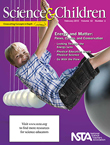 Energy and Matter is one of the most difficult of the crosscutting concepts in the Next Generation Science Standards for elementary teachers to develop. The ideas, tips and strategies in this issue of S&C will help equip you to introduce this crosscutting concept to your students
Energy and Matter is one of the most difficult of the crosscutting concepts in the Next Generation Science Standards for elementary teachers to develop. The ideas, tips and strategies in this issue of S&C will help equip you to introduce this crosscutting concept to your students
Featured articles (please note, only those marked “free” are available to nonmembers without a fee):
- Free – Editor’s Note: Energy and Matter
- Go With the Flow
- How Does My Brain Pay Attention?
- Inquiry-Based Science and the Next Generation Science Standards: A Magnetic Attraction
- Free – Looking Through the Energy Lens
- Physical Education Meets Physical Science
- Full Table of Contents
Science Scope
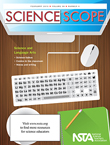 The Common Core State Standards for English language arts (CCSS ELA) and the Next Generation Science Standards (NGSS) share common goals for student literacy. This issue explores strategies for achieving literacy in science and technical subjects for students in grades 6–8.
The Common Core State Standards for English language arts (CCSS ELA) and the Next Generation Science Standards (NGSS) share common goals for student literacy. This issue explores strategies for achieving literacy in science and technical subjects for students in grades 6–8.
Featured articles (please note, only those marked “free” are available to nonmembers without a fee):
- Comic Relief: Using Comics and Illustrated Trade Books to Support Science Learning in First-Year English Language Learners
- Free – Editor’s Roundtable: Literacy Provides Common Ground for standards
- Free – Reading and Writing Alignment Across Content Areas
- Science Haiku Art
- Teaching Graph Literacy Across the Curriculum
- The Who, What, When, Where, and How of Waves
- Using Disciplinary Literacy Strategies to Enhance Student Learning
- Full Table of Contents
The Science Teacher
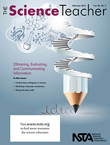 It’s arguable that all science learning begins and ends with obtaining, evaluating, and communicating information. We think of scientists and engineers working in the laboratory or outside during field research, but it turns out that reading and writing comprise over half the work of practicing scientists and engineers. Communicating science and engineering understanding is challenging, but the rewards are great, giving students a unique opportunity to synthesize ideas and solidify understanding. You can start by having students keep a science notebook or journal—including drawings, numbers, and words. We hope this issue inspires you to reinforce this important practice in the classroom. YouTube fans, watch high school science teacher and TST Field Editor, Steve Metz, introduce this month’s issue. Metz explains why this month’s topic so important. For starters, did you know that reading and writing comprise over half the work of practicing scientists and engineers?
It’s arguable that all science learning begins and ends with obtaining, evaluating, and communicating information. We think of scientists and engineers working in the laboratory or outside during field research, but it turns out that reading and writing comprise over half the work of practicing scientists and engineers. Communicating science and engineering understanding is challenging, but the rewards are great, giving students a unique opportunity to synthesize ideas and solidify understanding. You can start by having students keep a science notebook or journal—including drawings, numbers, and words. We hope this issue inspires you to reinforce this important practice in the classroom. YouTube fans, watch high school science teacher and TST Field Editor, Steve Metz, introduce this month’s issue. Metz explains why this month’s topic so important. For starters, did you know that reading and writing comprise over half the work of practicing scientists and engineers?
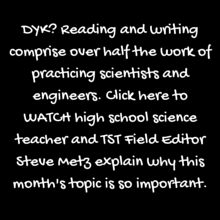 Featured articles (please note, only those marked “free” are available to nonmembers without a fee):
Featured articles (please note, only those marked “free” are available to nonmembers without a fee):
- Beyond an Equation
- Confronting Ambiguity in Science
- Doing the Data Walk
- Free – Editor’s Corner: Obtain, Evaluate, Communicate!
- Modeling Molecular Machinery
- Sinking In
- Full Table of Contents
Get these journals in your mailbox as well as your inbox—become an NSTA member!
Follow NSTA
Energy and Matter; Science and Language Arts; and Obtaining, Evaluating, and Communicating Information—these are the themes of the February 2015 journal articles from the National Science Teachers Association (NSTA).
It’s a Great Time for the Latest Next Time You See Books
By Carole Hayward
Posted on 2015-02-03
Emily Morgan, popular NSTA Press co-author of the Picture-Perfect Science Lessons series, has recently added three new books to the Next Time You See series: Next Time You See a Maple Seed, Next Time You See the Moon, and Next Time You See a Pill Bug.
In a note to parents and teachers, Morgan explains that “the books in this series are intended to be read with a child after he or she has had some experience with the featured objects or phenomena….The Next Time You See books are not meant to present facts to be memorized. They were written to inspire a sense of wonder about ordinary objects or phenomena and foster a desire to learn more about the natural world.”
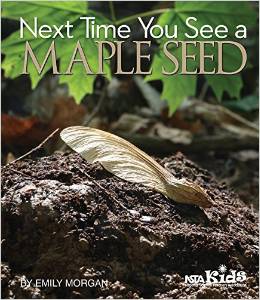 What we often call maple seeds are really the fruit produced by a maple tree. These winged fruits are known as samaras. They are also a source of delight for children as they watch them spin through the air like tiny helicopters. Have you and your students ever wondered why they do that? Learn about maple seeds and what it takes for one to actually grow into a maple tree.
What we often call maple seeds are really the fruit produced by a maple tree. These winged fruits are known as samaras. They are also a source of delight for children as they watch them spin through the air like tiny helicopters. Have you and your students ever wondered why they do that? Learn about maple seeds and what it takes for one to actually grow into a maple tree.
 The Moon has fascinated mankind through the ages. Its beauty and changing shape have inspired art, music, poetry, and storytelling throughout history. Have you and your students ever discussed why the Moon appears to have different shapes at different times of the month? The explanations and stunning photography in this book can help your students understand more about the Moon’s orbit and its different phases.
The Moon has fascinated mankind through the ages. Its beauty and changing shape have inspired art, music, poetry, and storytelling throughout history. Have you and your students ever discussed why the Moon appears to have different shapes at different times of the month? The explanations and stunning photography in this book can help your students understand more about the Moon’s orbit and its different phases.
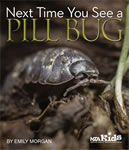 The pill bug is a tiny roly-poly creature often found under rocks. Studying these members of the crustacean family, you and your students will learn that pill bugs are actually isopods, which means that all 14 of their feet are the same. This makes them different from their cousins, the crab and the lobster.
The pill bug is a tiny roly-poly creature often found under rocks. Studying these members of the crustacean family, you and your students will learn that pill bugs are actually isopods, which means that all 14 of their feet are the same. This makes them different from their cousins, the crab and the lobster.
These books also have downloadable companion classroom activities: Next Time You See a Maple Seed, Next Time You See the Moon, and Next Time You See a Pill Bug. These activities are designed to be done before and after reading the books. Feel free to pick and choose from the list based on the age of the children and your purpose for reading.
These books are also available as e-books: Next Time You See a Maple Seed, Next Time you See the Moon, and Next Time You See a Pill Bug
NSTA Kids book are trade books dedicated to nurturing the wonder and curiosity inherent in young minds. Learn more about these books geared toward elementary-age students (grades K–6).
Emily Morgan, popular NSTA Press co-author of the Picture-Perfect Science Lessons series, has recently added three new books to the Next Time You See series: Next Time You See a Maple Seed, Next Time You See the Moon, and Next Time You See
The Science of Design: Structure and Function: Featured Strand at NSTA’s 2015 National Conference on Science Education in Chicago, IL, March 12-15
By Lauren Jonas, NSTA Assistant Executive Director
Posted on 2015-01-31
 If you’ve been to Chicago, you know it’s an ideal place to focus on design and architecture. So this March, the National Science Teachers Association (NSTA) will feature a special strand “The Science of Design: Structure and Function” at our 2015 National Conference on Science Education, in Chicago, March 12–15. Our conference organizers recognize that architecture and engineering provide the infrastructure for human-made systems, that designing for the future requires imagination and a commitment to sustainability, and that teaching about this involves the crosscutting concepts of structure and function and the practices of science and engineering. Communities like Chicago provide examples of great design and great science.
If you’ve been to Chicago, you know it’s an ideal place to focus on design and architecture. So this March, the National Science Teachers Association (NSTA) will feature a special strand “The Science of Design: Structure and Function” at our 2015 National Conference on Science Education, in Chicago, March 12–15. Our conference organizers recognize that architecture and engineering provide the infrastructure for human-made systems, that designing for the future requires imagination and a commitment to sustainability, and that teaching about this involves the crosscutting concepts of structure and function and the practices of science and engineering. Communities like Chicago provide examples of great design and great science.
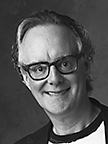 Sessions organized around this strand include a featured presentation on Friday, March 13, 9:30 AM – 10:30 AM (“The Power of Play”) by Peter Exley (Architecture is Fun, Inc.: Chicago, IL). Not familiar with Exley? Check out this profile on him in Chicago Artists Month. And there will be hundreds more sessions in Chicago that highlight great design and great science; below is a small sampling so you see what’s in store:
Sessions organized around this strand include a featured presentation on Friday, March 13, 9:30 AM – 10:30 AM (“The Power of Play”) by Peter Exley (Architecture is Fun, Inc.: Chicago, IL). Not familiar with Exley? Check out this profile on him in Chicago Artists Month. And there will be hundreds more sessions in Chicago that highlight great design and great science; below is a small sampling so you see what’s in store:
- The Maker Movement
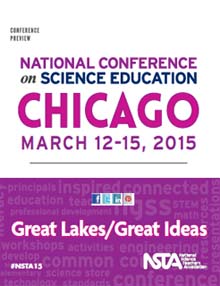
- From the Love Canal to Phytoremediation: What’s New in Environmental Engineering?
- Engaging Girls in Engineering Through Community Service
- McREL Pathway Session: Green STEM in Elementary Classrooms
- Understanding Car Crashes: Engineering Truly Impactful STEM Lessons
- Helping Middle School Students “Discover Engineering”
- Eco-Structure and Function: Analyzing River Health with Engineering Practices in Problem-based Situations
- Engineering Design Inspired by Nature
Want more? Check out more sessions and other events with the Chicago Session Browser/Personal Scheduler, or take a peek at the online conference preview (pdf). Follow all our conference tweets using #NSTA15, and if you tweet, please feel free to tag us @NSTA so we see it!
The mission of NSTA is to promote excellence and innovation in science teaching and learning for all.
Follow NSTA
| |
|
|
|


